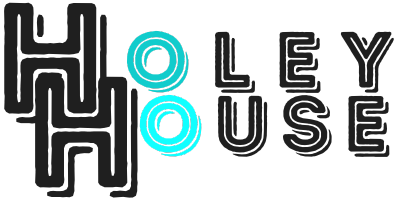Below is a set of survivor-informed healing exercises drawn directly from the insights and counseling implications discussed in The Long-Term Effects of Childhood Sexual Abuse: Counseling Implications by Hall & Hall (2011). These exercises are designed with tenderness, trauma literacy, and survivor autonomy at the center, perfect for use in journals, therapy, or workshops.
Reclaiming Responsibility: The Shame Reversal Journal
Theme:
Reattributing blame from self to perpetrator
Purpose:
To untangle self-blame and release internalized shame
Instructions:
Title a journal page: “What Was Never Mine to Carry”
Write a list of all the things you blamed yourself for during or after the abuse.
Examples:
-
-
-
-
- “I should have said no.”
- “I didn’t fight back.”
- “I should’ve told someone.”
-
-
-
Next to each one, write a truth-based reframe:
-
-
- “I was a child. Saying no was not my job, protecting me was theirs.”
- “I froze because my nervous system did exactly what it needed to survive.”
-
Affirmation to Close:
“Shame belongs to the one who caused harm, not the one who survived it.”
Trust Touch Map: Reclaiming the Body with Consent
Theme:
Rebuilding body connection and physical boundaries
Purpose:
To explore safe, consensual, and empowering touch (non-sexual)
Instructions:
Print or draw a body outline (front and back).
Using colors or symbols, mark:
-
-
- Green zones: Areas where you feel safe receiving touch (e.g., shoulders, hands).
- Yellow zones: Areas that are sometimes okay, depending on context and who.
- Red zones: Areas that are off-limits right now.
-
Reflect:
What makes touch feel safe to me?
Who honors my boundaries?
What would it mean to feel fully in charge of my body again?
Partner Activity Option:
Use this map in couples therapy or intimacy work to educate a trusted partner.
Mapping Dissociation: Where I Go When I Disappear
Theme:
Dissociation and disconnection
Purpose:
To bring gentle awareness to trauma-based disconnection and track patterns
Instructions:
Title a page: “When I’m Not Here”
Describe what dissociation feels like for you (e.g., zoning out, floating, going numb).
Journal:
-
-
- What are the triggers?
- What happens in your body?
- What helps you come back?
-
Draw a “Return Home Toolkit” with grounding tools:
-
-
- Texture: Holding ice
- Movement: Rocking
- Sound: Humming
- Smell: Peppermint oil
-
Grounding Statement:
“When I feel like I’m leaving, I give myself permission to gently come back.”
The Anger Altar: Sacred Rage as Power
Theme:
Processing survivor anger for empowerment
Purpose:
To reframe anger as valid, sacred, and healing
Instructions:
Gather items that represent your anger (red candle, black rock, burnt paper, etc.).
Sit with your altar and write a “rage letter” to your abuser (don’t send it).
-
-
- Say everything you never got to say. No censors. No shame.
-
Optional:
Rip or burn the letter (safely) and say aloud:
“I honor my rage. It is not destructive, it is divine fire showing me where the wound is.”
Mirror of Worthiness: Healing the Wound of “I’m Broken”
Theme:
Self-concept, depression, and body image
Purpose:
To counter the internalized messages of defectiveness
Instructions:
Stand in front of a mirror. Look into your eyes. Speak gently:
-
-
- “You are not what happened to you.”
- “You are worthy of love, safety, and softness.”
-
Then write:
3 lies I believed because of the abuse…
3 truths I am learning to hold instead…
Example:
Lie: “I am disgusting.”
Truth: “What was done to me was disgusting. I am sacred.”
The Relational Garden: Healing Relationship Trauma
Theme:
Rebuilding trust and intimacy
Purpose:
To help survivors reimagine healthy relationships and emotional safety
Instructions:
Draw or visualize a “Relational Garden.”
Each plant represents a relational value: trust, mutual respect, honesty, boundaries.
Reflect:
Which plants are thriving in your current relationships? Which need more care?
Journal prompt:
“If I could design a relationship that feels like safety, what would it look like?”
Partner Healing Tip:
Use this garden metaphor to have a conversation about your needs and limits in intimate relationships.
Sexual Healing Inventory
Theme:
Healing sexual functioning and intimacy
Purpose:
To connect present-day challenges to past trauma with compassion
Instructions:
Read the list of symptoms from Maltz (2002) mentioned in the article (e.g., avoiding sex, feeling numb, flashbacks, compulsive behaviors).
Check off any that feel familiar.
Gently journal:
“What does my body remember that my mind has forgotten?”
“What does my body need to feel safe, not perform?”
Affirm:
“I define sexuality on my own terms. My pleasure, my pace, my power.”
Counseling Readiness Reflection
Theme:
Exploring readiness for trauma-informed counseling
Purpose:
To support survivors in naming their hopes, fears, and goals for healing
Prompt:
“What would make me feel safe in therapy?”
“What do I want help with right now?”
“What scares me about telling my story?”
“What would healing look like, for me?”
Use these insights to advocate for your needs when choosing a therapist or joining a support group.
Further Reading
If you’re looking for more information on the topic of healing from childhood sexual abuse, the following articles may be helpful:
Sexual Intimacy After Sexual Assault or Sexual Abuse
Sexual Issues in Treating Trauma Survivors
Sensate focus: a critical literature review

0 Comments